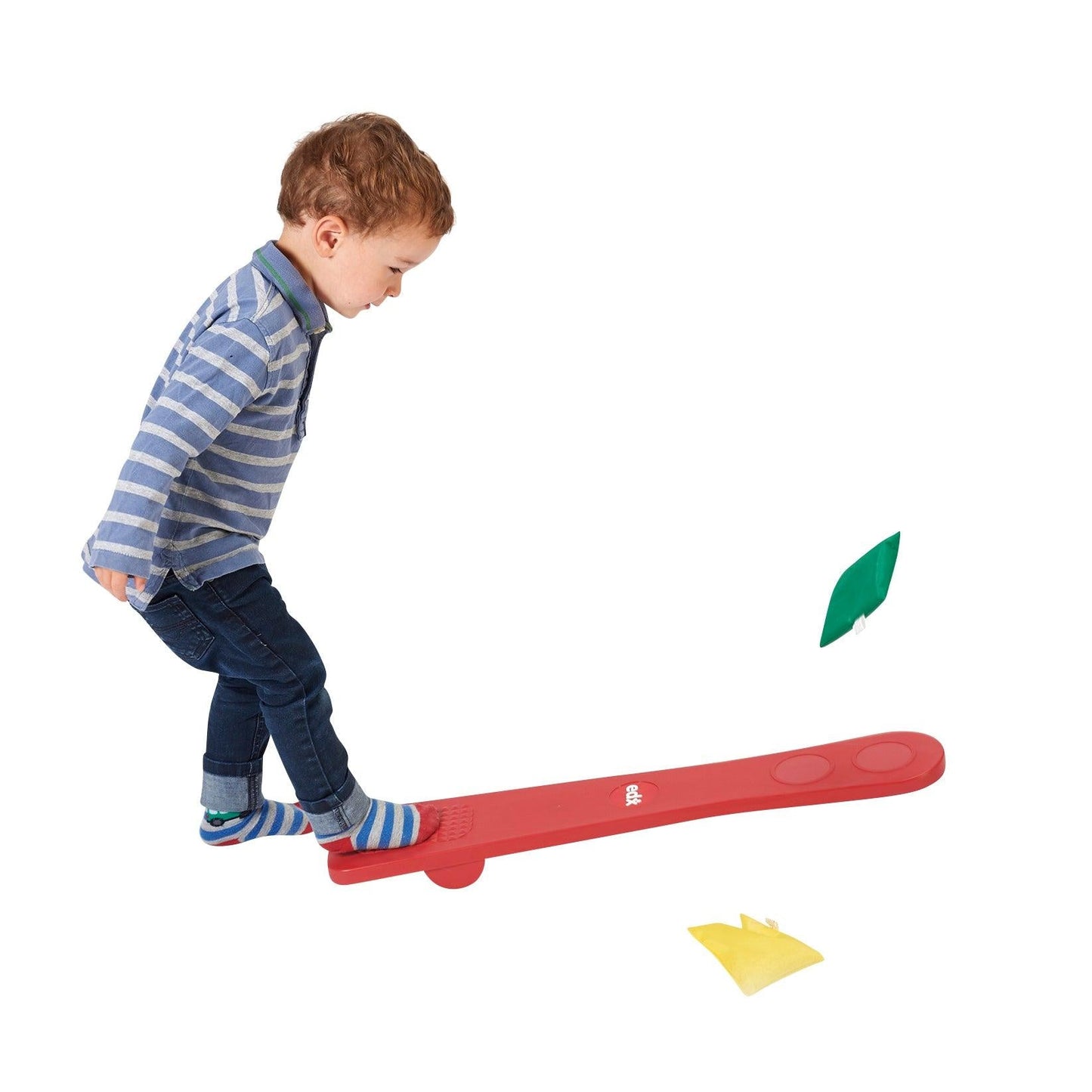
When we think about early maths, we often picture children sitting at a table counting blocks or tracing numbers. But for many young learners—especially those who are active, curious, and full of energy learning through movement is far more effective. At Edx Education, we believe that maths is best learned through play, and that includes play that gets children moving, jumping, balancing, and laughing.
That’s where gross motor maths comes in a wonderful way to combine physical play with early number skills. By engaging the body, children not only strengthen their coordination and balance but also reinforce essential maths concepts like counting, sequencing, and pattern recognition.
Learning Maths Through Movement
Young children learn by doing. Movement activates both sides of the brain, helping them connect abstract ideas like “one, two, three”to real world actions. When a child hops three times, throws two bean bags, or balances along a trail of numbered steps, they’re physically experiencing quantity, rhythm, and order.
This physical engagement makes learning stick. Instead of memorising numbers in isolation, children feel what “three” means in their bodies. For active learners, this multi sensory approach builds both understanding and confidence in maths.
Making Maths Physical and Fun
You don’t need a classroom or even a lot of space to get children moving with maths. With a few simple tools and a playful attitude, everyday environments gardens, living rooms, or playgrounds become rich learning spaces.
Here are some playful ideas using Edx Education’s active learning resources:
- Joey Jump: This fun coordination game encourages children to stomp on a board and send a bean bag flying into the air. As they try to catch it, they can count out loud “one, two, three!” each time they jump. This builds counting fluency, timing, and body control. You can even make it a challenge: “Can you catch it after five jumps?” or “Let’s see if you can catch it three times in a row!”
- Step-a-Trails: These bright, textured stepping stones are perfect for number sequencing and balance play. Arrange them in a number line and have children walk, hop, or tiptoe along while counting forward and backward. To extend the game, hide a few numbers and encourage children to fill in the missing ones as they move. This physical number line strengthens understanding of order, one-to-one correspondence, and early addition and subtraction.
- Bean Bags: One of the most versatile learning tools, bean bags can be tossed, balanced, or hidden for countless counting games. Try a “bean bag toss” where children aim for numbered buckets or hoops, counting their throws as they go. Indoors or outdoors, bean bags make counting tangible—and active
Learning Together: Indoor and Outdoor Games
Group play offers even more opportunities for maths and movement. Games like number relay races, counting catch, or jump-and-count challenges are wonderful for developing teamwork, listening skills, and turn taking all while reinforcing numeracy.
For example, line up a set of numbered Step-a-Trails and call out “Hop to number five!” or “Can you walk backward from ten to one?” Children listen, move, and count all in one joyful burst of activity.
And on rainy days, bring the fun indoors: create a numbered obstacle course with cushions, or toss bean bags onto number cards spread across the floor. The key is to make learning feel like play, not work.
Building Confidence Through Play
When children move, they’re not just learning maths they’re learning about themselves. Balancing, jumping, and catching build body awareness, coordination, and perseverance. These physical skills link directly to emotional growth, giving children the confidence to take on challenges both in play and in the classroom.
At Edx Education, we design toys like Joey Jump, Step-a-Trails, and Bean Bags to inspire active learning and joyful exploration. Each product helps children connect body and mind, building strong foundations for numeracy, coordination, and confidence.
Keep Playing, Keep Counting
Maths doesn’t have to mean sitting still. By blending movement with counting, we create powerful learning moments that children will remember. So next time your child is full of energy, turn it into a maths adventure count steps, jumps, or throws, and watch their number skills grow through play.
To discover more active learning ideas, explore our free downloadable resources and tune into our Play, Learn & Create with Edx Education podcast, where we share expert tips and playful ways to support your child’s learning journey.
By Heather Welch, General Manager Edx Education UK and Author of Happy Children Play

